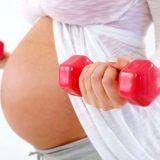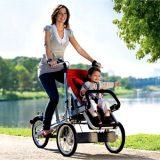Methods of induction of labor

Labor does not always start in a natural way. Sometimes hormone levels is not sufficient to start the intensive labor. Then in the course are various methods of induction of labor.
The risk of induction of labor
Women are not particularly willing to agree to an induction of labor. The reason for this – the fear of possible risks to the mother and child. In most cases, stimulation of labor yet, conversely, prevent possible threats to the health of mother and child. But there are a number of dangers:
- with prolonged labor process even with stimulation after a while there the risk of rupture of the amniotic bag;
- in rare cases, could face loss of umbilical cord loops;
- if a cesarean section was the previous method of delivery or to operate in the uterus, the promotion of labor can be quite dangerous; possible negative effects are amplified with the use of Pitocin or prostaglandins;
- there is little risk of placental abruption from the uterine wall;
- intense pain after the use of drugs for induction of labor, use of drugs and epidural anesthesia for pain relief – the risks associated with their use;
- unsuccessful induction of labor may cause fetal hypoxia .
Contraindications to induction of labor
Stimulation of labor can not be recommended if:
- the fetus is in a transverse (sideways) position within the uterus;
- water broke: torn membrane containing the amniotic sac that surrounds the baby and birth is not started, that provokes the risk of intrauterine infection;
- diagnosed in the fetus abnormality in the heart;
- was prolapsed cord in the vagina;
- decreases the power of the child through the umbilical cord due to too much of pregnancy – after 42 weeks – or increases the risk that the fetus will lock up the airways with inhalation of the contents of the intestine – meconium, the release of which may occur in the amniotic fluid;
- stops the development and growth of the child;
- fixed placental abruption;
- diagnosed placenta previa : the placenta partially or completely covers the opening of the uterus;
- have diabetes in a pregnant woman;
- began uterine bleeding ;
- delivered an infectious disease of the uterus;
- high blood pressure in pregnant women.
Remember that stimulate labor should be carried out only in a maternity hospital!
Stimulation of labor in the home: folk methods
Some women, on the advice of their loved ones or even doctors, have resorted to the so-called People’s way of induction of labor. The effectiveness of most of them is very questionable:
- increase in the duration and activity of walking – their effectiveness has not been proven as a stimulation to the present day;
- herbal infusions – scientifically unproven method of stimulation, moreover, some of them can harm;
- sex as an opportunity to get prostaglandins through semen – this theory has not been proved, the only thing that can stimulate contraction of the uterus – is the hormone oxytocin , which is produced in women during and after sex;
- castor oil – can only cause nausea and lead to a state of irritation of the gastrointestinal tract;
- intensive massage of the breast, nipple stimulation – is the risk of causing excessively strong contractions that are too strong stimulation – it is dangerous; explanation of this stimulation again lies in the development of oxytocin, but the efficiency is possible only when ready, ripe cervix;
- swinging on a swing – it can stimulate fetal descent down; swing must be safe;
- squatting – helps only if the delay childbirth due to too high location of the fetus; when squatting pelvis opens, creates more space for the birth of a child and easier to pass through the birth canal;
- ascent and descent of the stairs – it helps to expand the cervix to open the pelvis, increasing the space for the promotion of the child, to take a better position; should not be excessive fatigue when walking up the stairs;
- swimming with correct technique swim without curvature of the spine, especially breaststroke – the proper technique of swimming during pregnancy will help you master the water aerobics for pregnant women .
Professional induction of labor
Induction of labor may lead to the onset of labor within a few hours or days. In the absence of the onset of labor through a sufficient period can be assigned to a cesarean section.
We list the main ways to induce labor:
- amniotomy – opening the amniotic sac through making holes with a plastic needle into the amniotic bag, then have to start the fight, labor during the day, or an increased risk of infection;
- stimulation of cervical ripening – with the help of candles (gel) into the vagina or preoral introduced as prostaglandins hormone analogues for uterine contractions and cervical ripening;
- stimulation of labor, their amplification with intravenous Pitocin as an artificial analogue of oxytocin; the dose is increased gradually;
- membrane separation membranes is carried out in the exam room, but you can expect fights at home – a finger in the vagina, the doctor moves back and forth separates the membrane that connects the uterine wall and the amniotic bag; This procedure may cause a discharge and pain;
- encouraging the expansion of the uterus by introducing a catheter – inserted a thin tube with a ball on the end of the vagina, after the introduction of the ball is filled with liquid.
Induction of labor with drugs often requires administration of analgesics, muscle relaxants, or the use of epidural anesthesia . A sharp increase in labor can cause severe pain. Introduction of stimulant medications should be accompanied with control heart rate monitors.
Induction of labor is impossible without a preliminary diagnosis of cervical cancer, the location of the fetus in the womb. For the onset of labor the cervix should be completely open, to become thinner, and the child is in the correct position. Good you genera that do not need extra stimulation!













